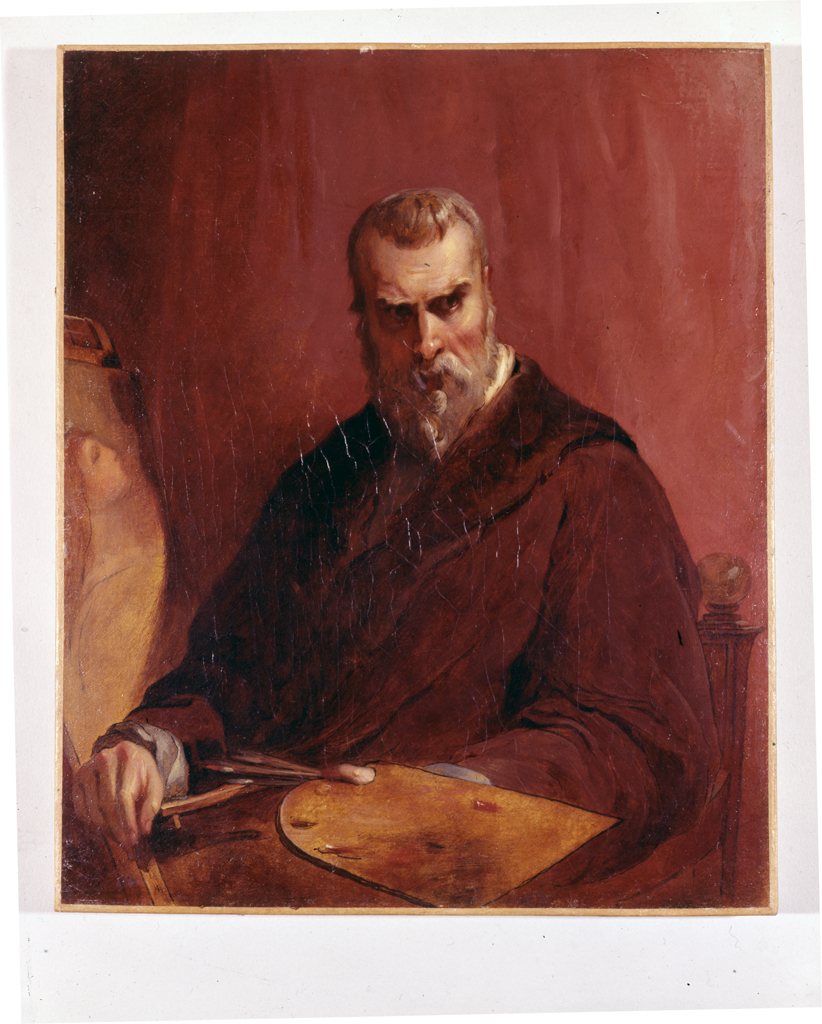Study for Tintoretto Painting the Portrait of His Dead Daughter

Léon Cogniet, Study for Tintoretto Painting the Portrait of His Dead Daughter, 1843, oil on canvas, Museum Purchase: Edwin Binney, 3rd, Fund, public domain, 77.11
This work is not currently on view.
- Title
Study for Tintoretto Painting the Portrait of His Dead Daughter
- Artist
- Date
1843
- Medium
oil on canvas
- Dimensions (H x W x D)
17 1/8 in x 14 1/8 in
- Collection Area
European Art
- Category
Paintings
- Object Type
painting
- Culture
French
- Credit Line
Museum Purchase: Edwin Binney, 3rd, Fund
- Accession Number
77.11
- Copyright
public domain
- Terms
When his daughter died in 1590, the Renaissance artist Tintoretto painted her portrait as she lay awaiting burial. The emotional impact of deathbed scenes appealed to Romantic artists such as Léon Cogniet, who were drawn to subjects involving tragedy and death. These scenes also illustrated the belief that great art is fueled by great emotion, and the drive to create will assert itself regardless of circumstance. Cogniet was a student of Pierre Guérin along with Jean-Louis Géricault and Eugène Delacroix. He is considered a juste milieu artist; that is, one whose style combines elements of Academic Classicism and Romanticism. In this work, the frontal presentation and direct gaze of the sitter, as well as the setting, are characteristics of Renaissance portraiture. The work is painted, however, with the loose brushwork, intense emotion, and high color typical of Romantic painting.









